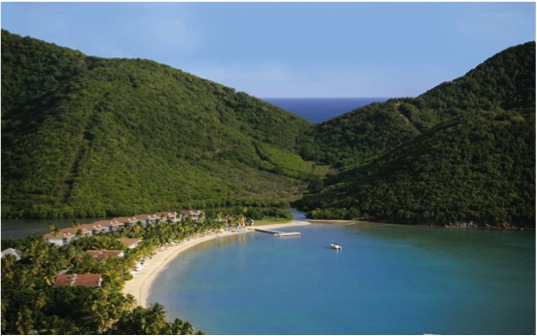Above: Carlisle Bay, Antigua
By Tim Peck
The Caribbean tourism industry waits with bated breath for the announcement of the OECS Common Tourism Policy on October 1. As the first policy of its kind for our region, a tourism blueprint will be established to guide the industry’s future development and allow tourism to continue playing a proportionally-stronger role in both GDP and employment creation than in any other comparable region across the globe.
Being the essential driver of the region’s growth, the tourism industry is the primary stimulus for many of the local economies within the Caribbean region, and thereby, the principal provider of taxes that support social and physical infrastructure in the islands.
In the past 20 years, the Caribbean economy has undergone a radical transformation, from one that is agriculture-dependent to now significantly relying on private sector tourism.
To have a true understanding of the tourism industry’s impact, we must review some statistics:
In 2010, the travel and tourism economy accounted for over 12 percent of the region’s GDP, more than any other region in the world, with an expectation that the industry will expand by 4.2 percent per year in real terms over the next 10 years.
Oxford Economics forecasts that tourism-related industries will be contributing $76.5 billion per year by the year 2020. The industry contributed 1.85 million jobs (1 in 9 of the regions’ jobs) in 2010, increasing to over 2.4 million in 2020. The investment in travel and tourism represents over 20 percent of the total investment in the region, and generates $23.6 billion in export revenues (15.8 percent of the region’s exports), with an anticipated average growth of 4.1 percent per year for the next 10 years.
These figures are based upon a regional average, which is disproportionately weighted by the larger nations of Puerto Rico, the Dominican Republic and Trinidad. In reality, the tourism industry in many of the smaller Caribbean economies accounts for more than 50 percent of all employment and, in some cases, over 75 percent of the local labour force.
The success of this industry is the result of the Caribbean’s fortunate combination of natural beauty and geographic proximity to the United States, rather than any sustainable development planning by the various governments.
As each successive Caribbean government is elected into office, the focus appears to be one of re-organizing the affairs of the previous administration, short-term planning, attention being paid to the next election, and little consideration offered to the longer-term issues affecting the broader stability of local economies. With the opportunity to finalize a regional tourism policy, there is the real possibility of leveraging some of the untapped resources of the Caribbean.
The Government of Antigua is breaking the mould by commissioning a structured Sustainable Tourism Development Plan. OBM International and Tourism and Leisure (a subsidiary of Europraxis) have been tasked by the government to produce recommendations by conducting a competitive analysis of the country’s existing tourist product, determining a growth strategy within the global context, and identifying and planning specific projects throughout the two-island nation.
The resulting Sustainable Tourism document will build, with the key stakeholders, a road map for Antigua’s development, outlining guidelines for the government and developers, offering predictability and minimizing “red tape”. This creative solution gives the Antiguan community an opportunity to participate in planning their future and symbiotically provides potential developers with attractive, realistic investment options.
Discussions with other regional and national investment promotion agencies have highlighted similar progressive strategies to prepare Sustainable Tourism Development Plans focused on leveraging the potential of existing land assets.
These national development plans would then, ideally, be combined as part of a regional tourism strategy focusing on the entire Caribbean, to allow for structured negotiations over airlift, regional and national infrastructure investment, and offer a level of predictability in a challenging global marketplace.
The concept of the existing Caribbean sun, sand and sea with the addition of formalized sustainable planning for the entire region will add strength and confidence for the future of Caribbean tourism development. Hopefully, the Common Tourism Policy will be the first step in a broader strategic vision for our region.
Tim Peck is chairman of OBM International (OBMI), one of the world’s leading architectural and planning firms, with nine global offices, including in the Cayman Islands, the British Virgin Islands, Antigua, Trinidad & Tobago, and Bermuda.
Note: the opinions expressed in Caribbean Journal op-eds are those of the author and do not necessarily reflect the views of the Caribbean Journal.
